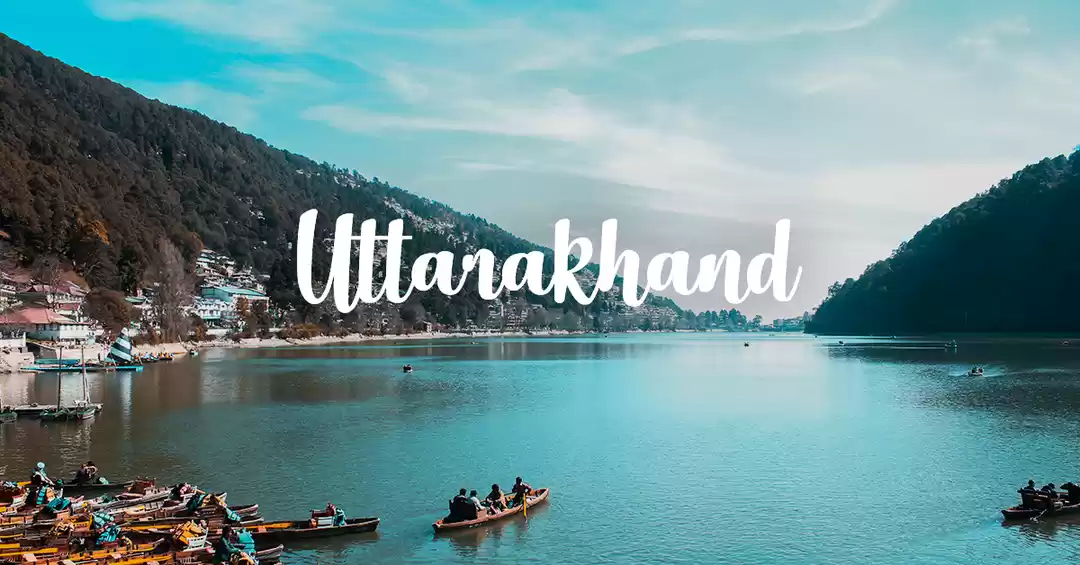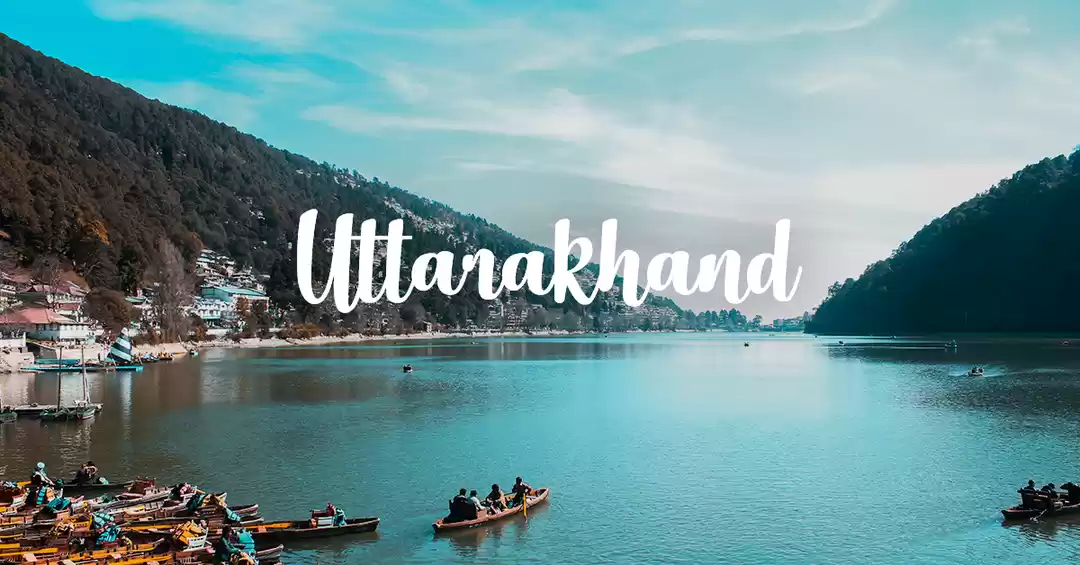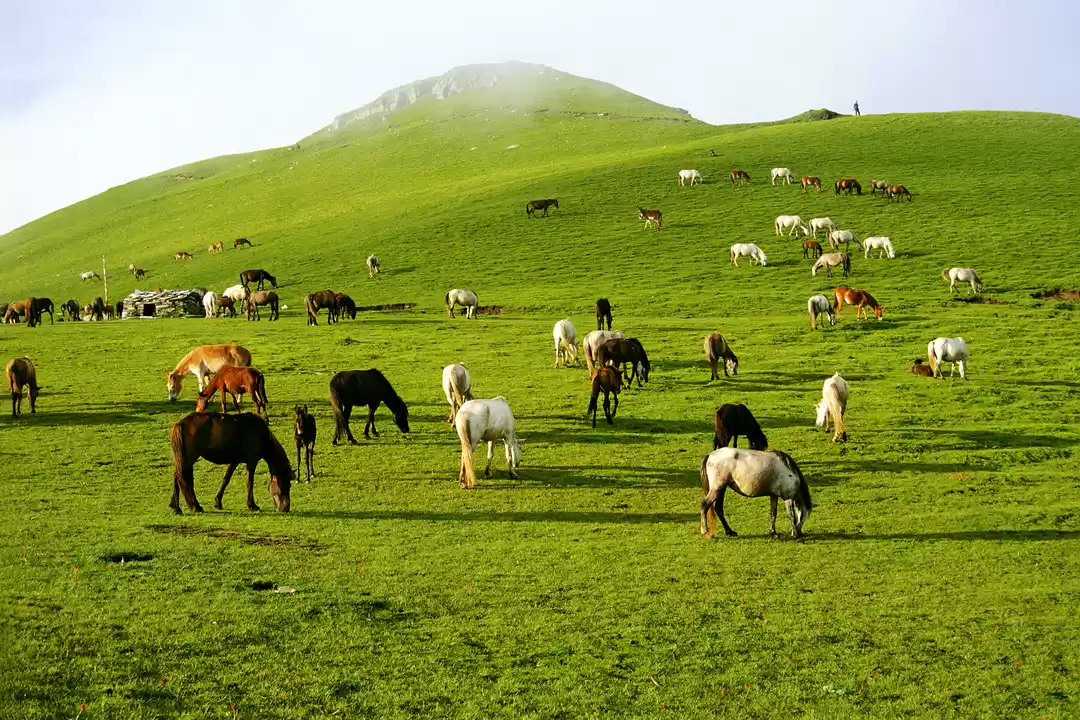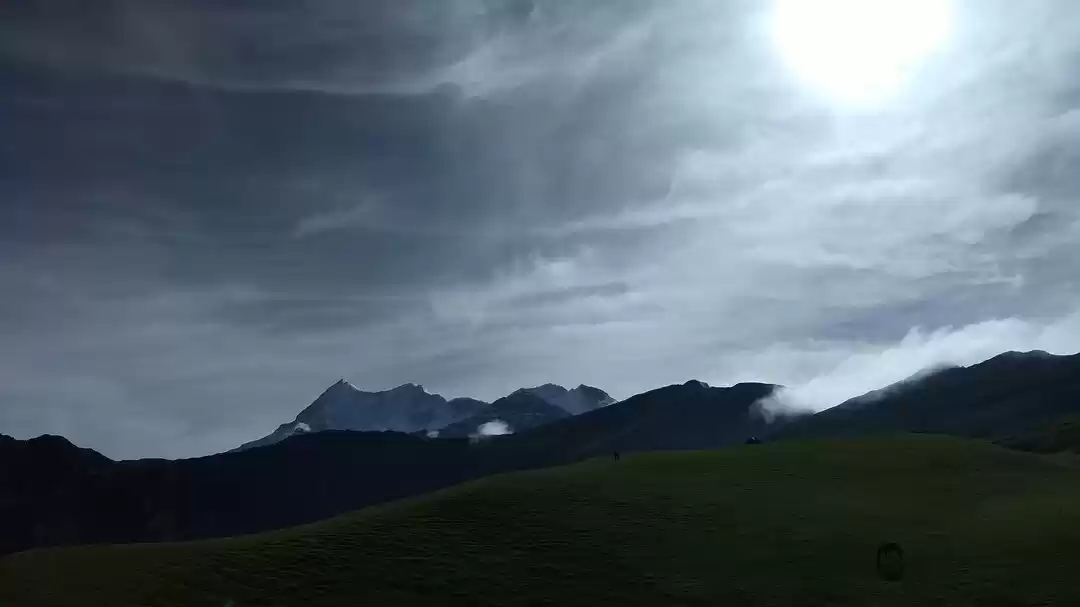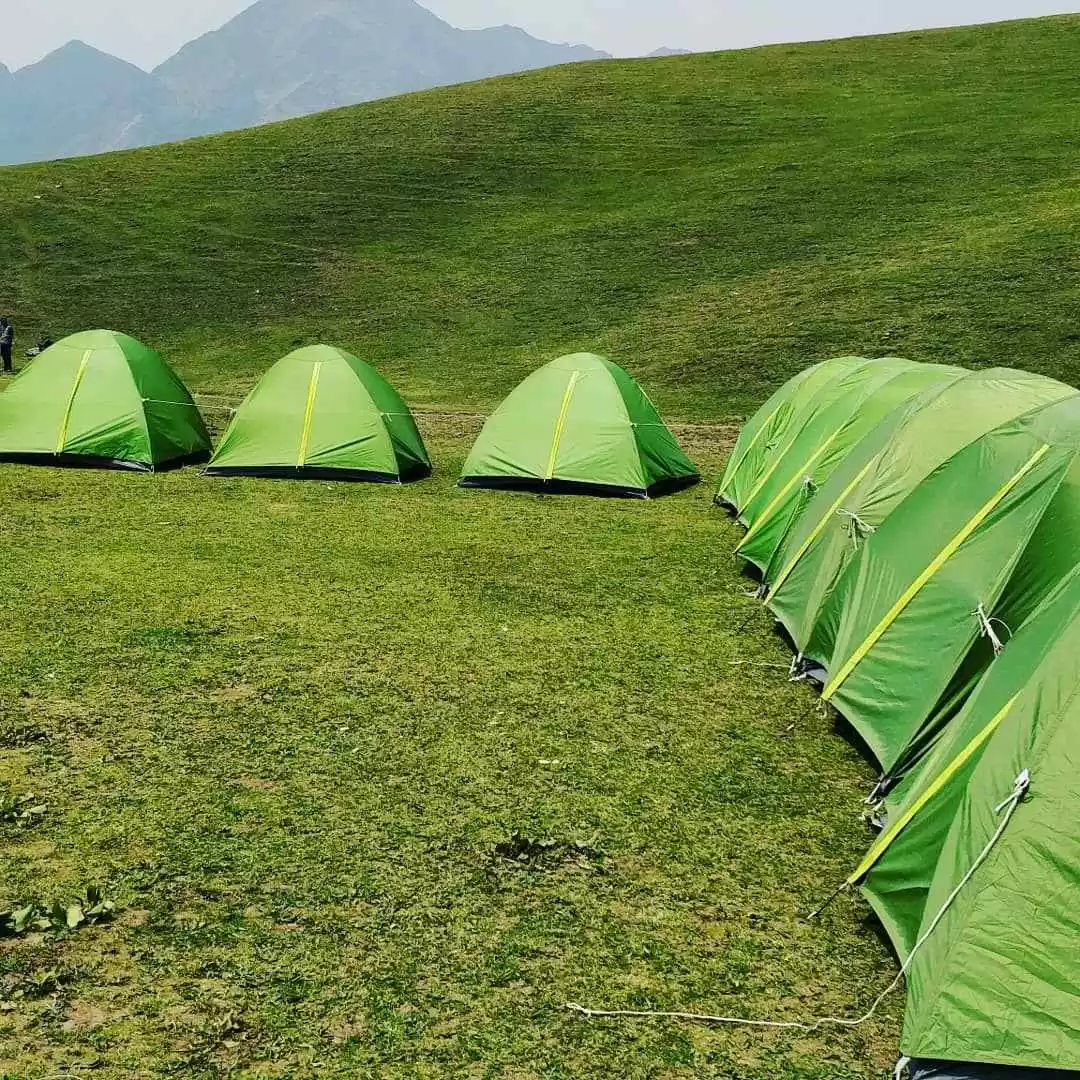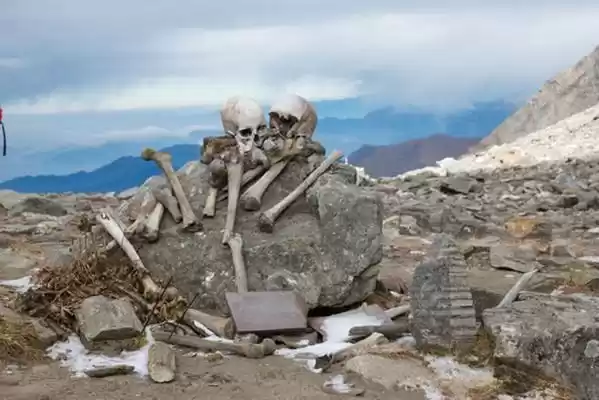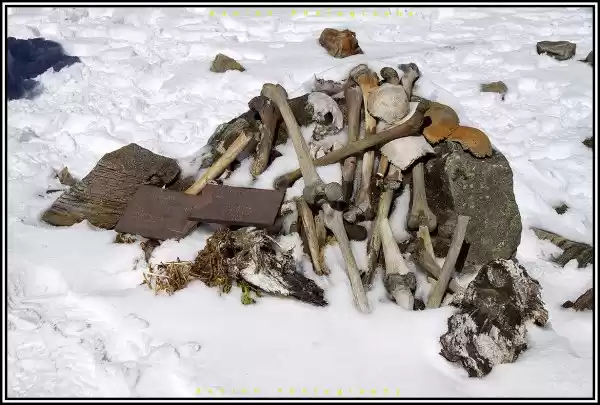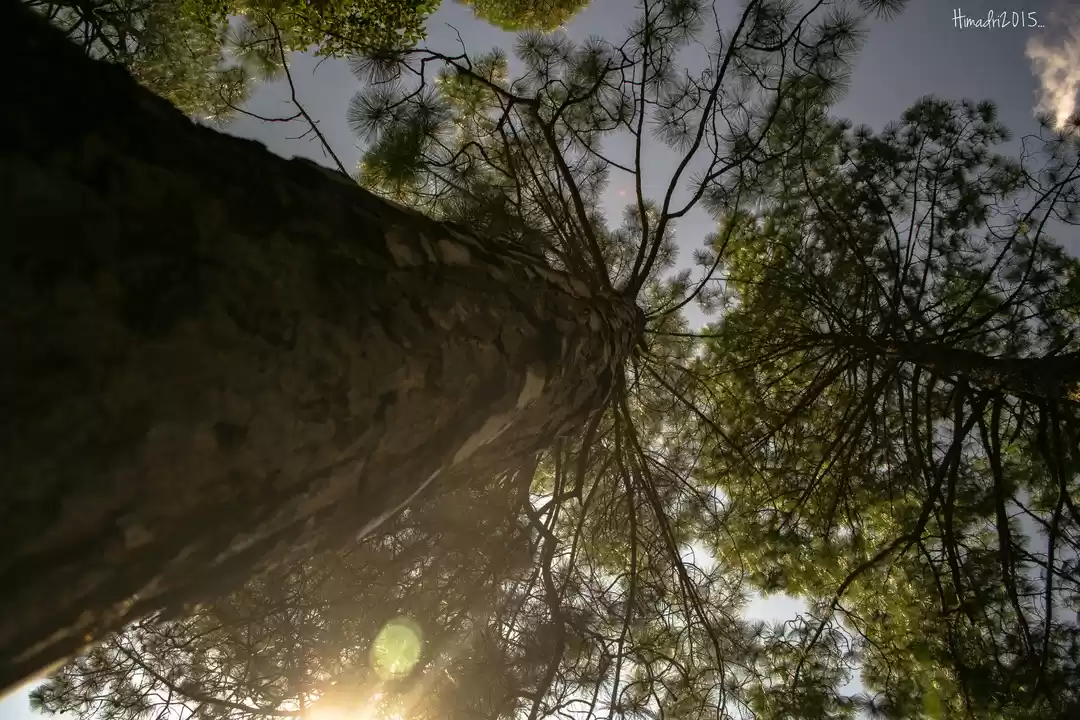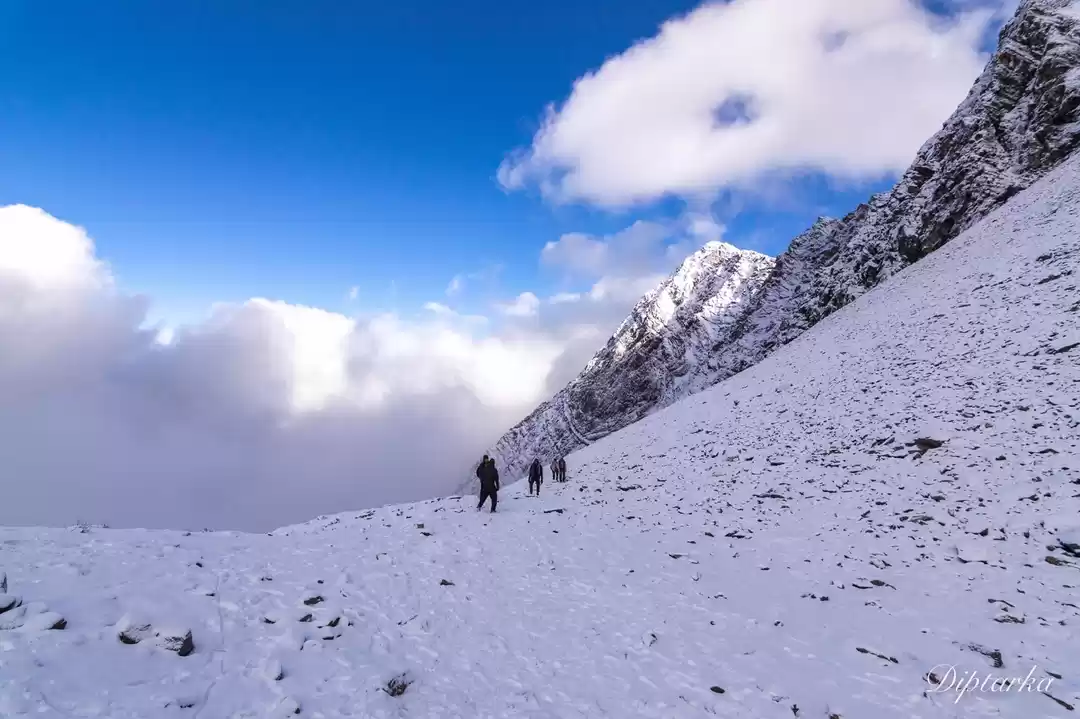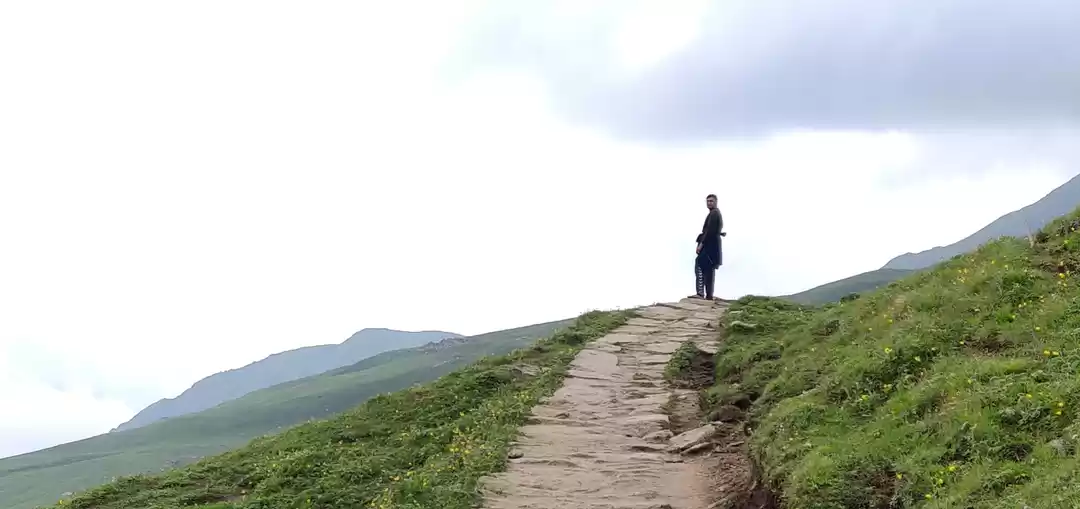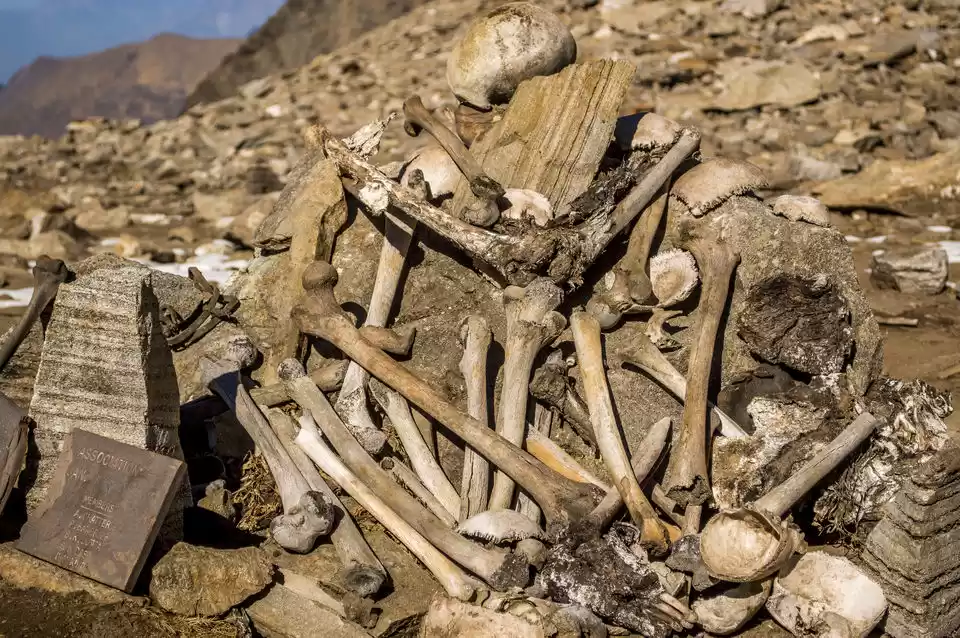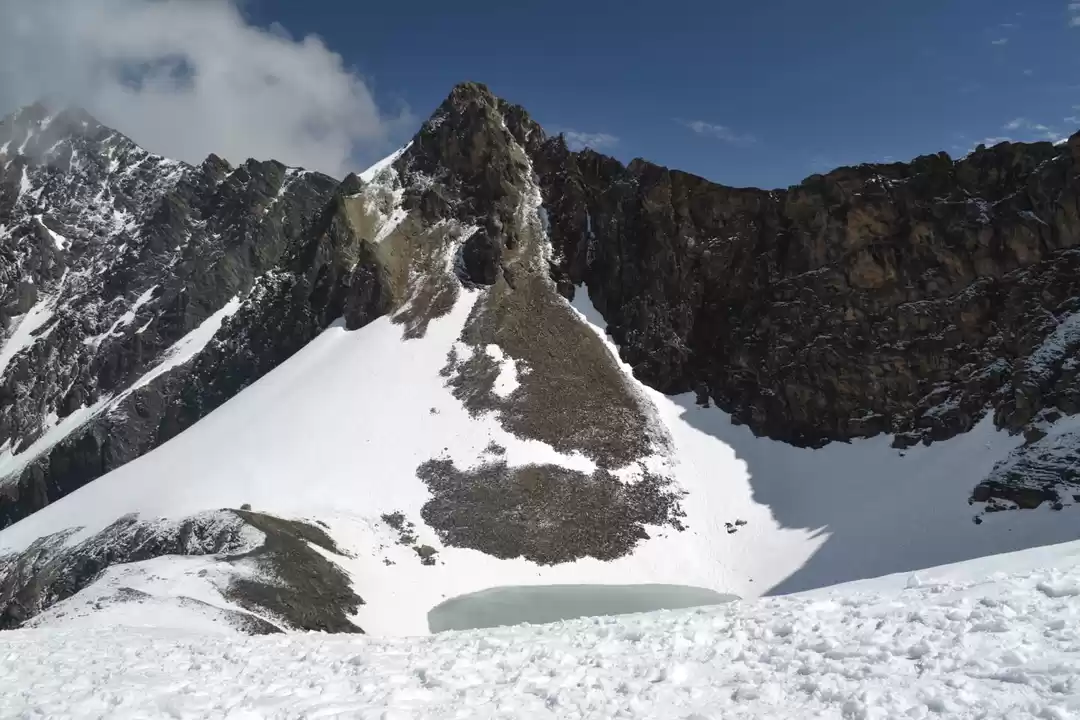A high-altitude glacier lake in Uttarakhand, India but that is not what caught the eye; the focal point was it is also known as the Skeletal Lake.

Roopkund is at an approximate height of 16000 feet in the lap of the Himalayas as most other treks. Every stop has a story linked to it which is both interesting and historical and takes us back to times when Gods used to appear in dreams and were visible to humans and there was a constant mode of communication unlike now when Gods are a figment of your imagination and the communication is left to be a one-sided love affair.
The entire trek to Roopkund is covered with lush green meadows and high trees, lots of cattle and a lovely sunshine but that is till you reach the last campsite post which you are welcomed by barren, rocky terrain and a paucity of oxygen.
We were planning for Roopkund for quite a while before finally attempting it. To avoid the long drive till Lohajung we decided to stay at Kausani for a day and the halt was refreshing. The next day our pit stop was Lohajung which apparently is the starting point for Roopkund.
The next beautiful morning we started our journey to Wan which is the starting point for Roopkund. You can hire cars till Wan which the locals drive and truly the roads are dangerous wherein there is a constant visitation of childhood memories when you first sat in a roller coaster. Adventurous but creepy.
Wan is a small village which shows no open signs to be the starting point to something both beautiful and historical.
Our destination and the first camp site was Gheroli Patal which was a 4 hours trek. The trek for the first day is all about steep ascends and steep descends if to be put in a nutshell. Crossing the Neel Ganga bridge will be the only major water body you will cross so do not forget to take a breather; fill in your lungs with fresh air and your bottles with fresh stream water; we ended up spending an hour there clicking photographs, giggling and enjoying nature and the fresh air.
Gheroli Patal is a dense forest hence the name with Oak and Rhododendron trees all around and the campsite right in the middle of it. Initially you get a feeling of camping in a forest just like Bear Grills with the only exception that you are well tended for and you have normal food to eat and a tent to rest to which you will feel thankful because it is these small things that sometimes makes us realize of what we have and how fortunate we all are.
The forest will seem to close in at night with a quietness which one rarely feels in the buzzing city life with only the crickets singing or the birds snoozing.
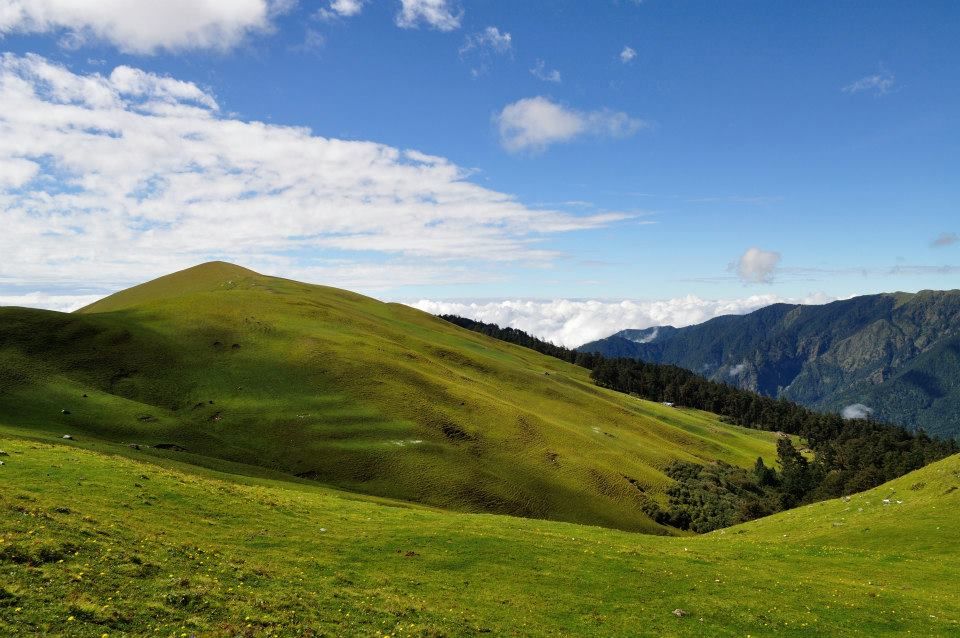
The next day our destination was Bedni Bugyal. In the local language "Bugyal" means "Meadows". Enroute Bedni we arrived at a place named Ali Bugyal another beautiful creation. The sheer minimalism of the place will fill your souls to the brim.
It seemed that the clouds were playing hide and seek with the sun and you get to experience the sun and the chill entering your bones at the same time; the climb to the Bedni top will take you a step closer to the clouds.
You get an amazing view of the snowcapped mountains of Trishul and Nanda Ghunti and if you wake up early enough you may witness the sunlight starting to fall on these peaks giving an illusion known as Golden Lights which is every photographers delight.
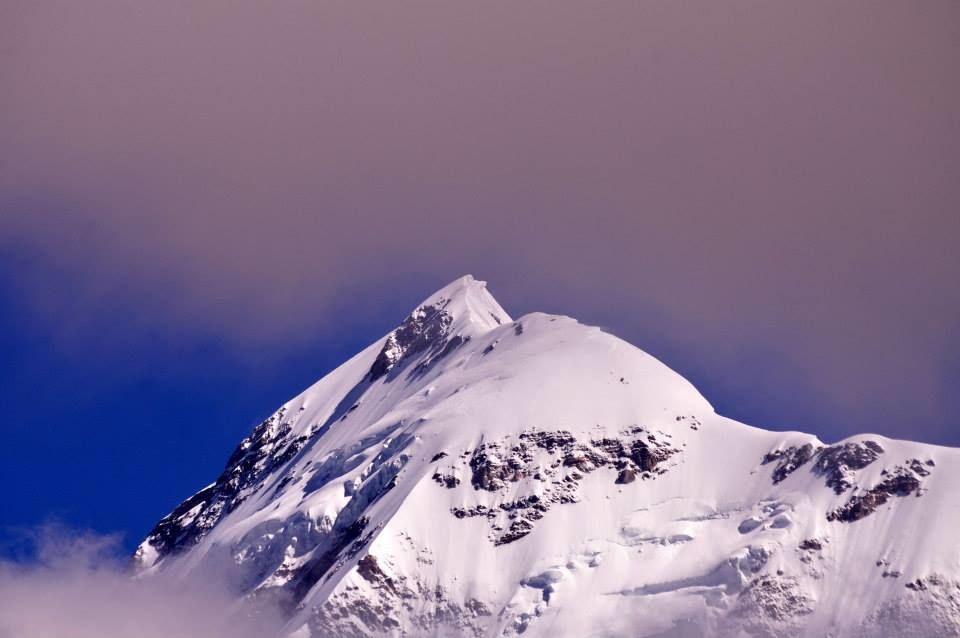
The 4th day takes you to Patar Nachauni which is visible from the Bedni campsite but the campsite disappears into a saddle in the mountain. Enroute Patar Nachauni there is a place named Ghoda Lautani. Ghoda in Hindi means "Horse" and lautani means to come back which means that a horse will never go past this place and a more scientific reason will be because the meadows give way to a mountain side.
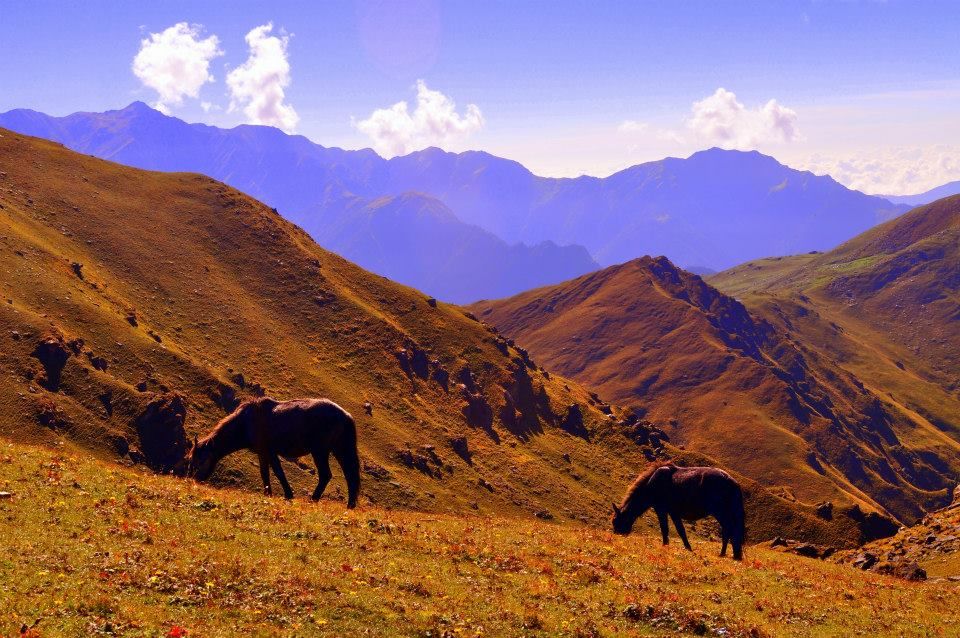
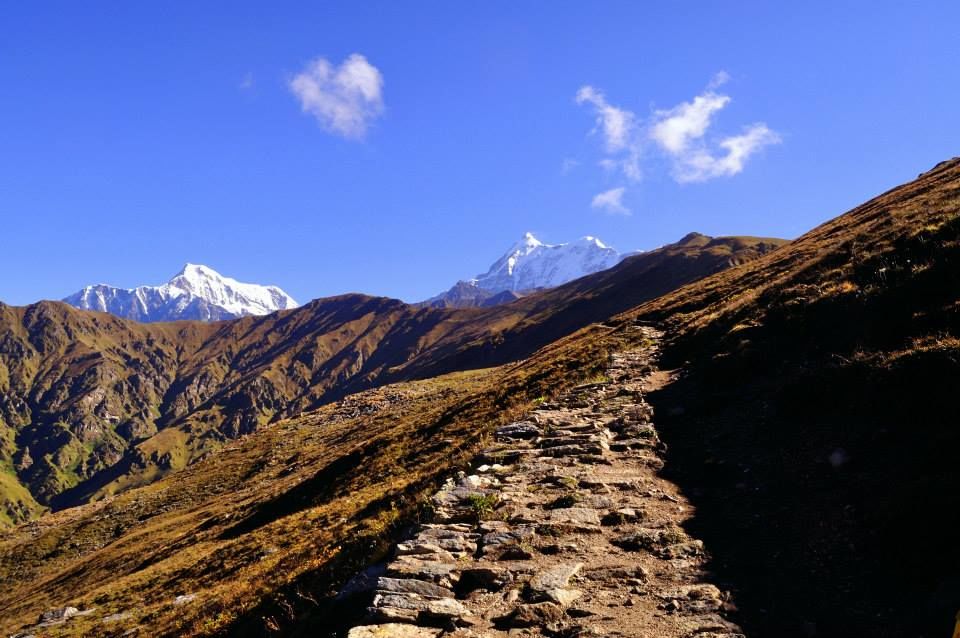
Patar Nachauni has its own story which starts with a Queen being visited by Goddess Parvati in her dreams and asking her to do a pilgrimage to Nanda Devi for the good of her people; she started with the pilgrimage with her King in pursuit. The King was traveling with a large group which also included few dancers. The King got so lost in their performance that he forgot about the pilgrimage. Nanda Devi cursed the King by turning all dancers into rocks which are 3 gaping holes in earth whose depth is still unknown and thus the name Patar Nachauni where Patar means "Rocks" and Nachauni means dancers.
Patar Nachauni will be the last of lush green meadows; enter Bhagwabhasa which will be Day 5. The trek to Bhagwabhasa will take you approximately 5 hours of moderately steep climb with a breather at Kalu Vinayak which is a small temple at the top of the mountain depicting Lord Ganesh.
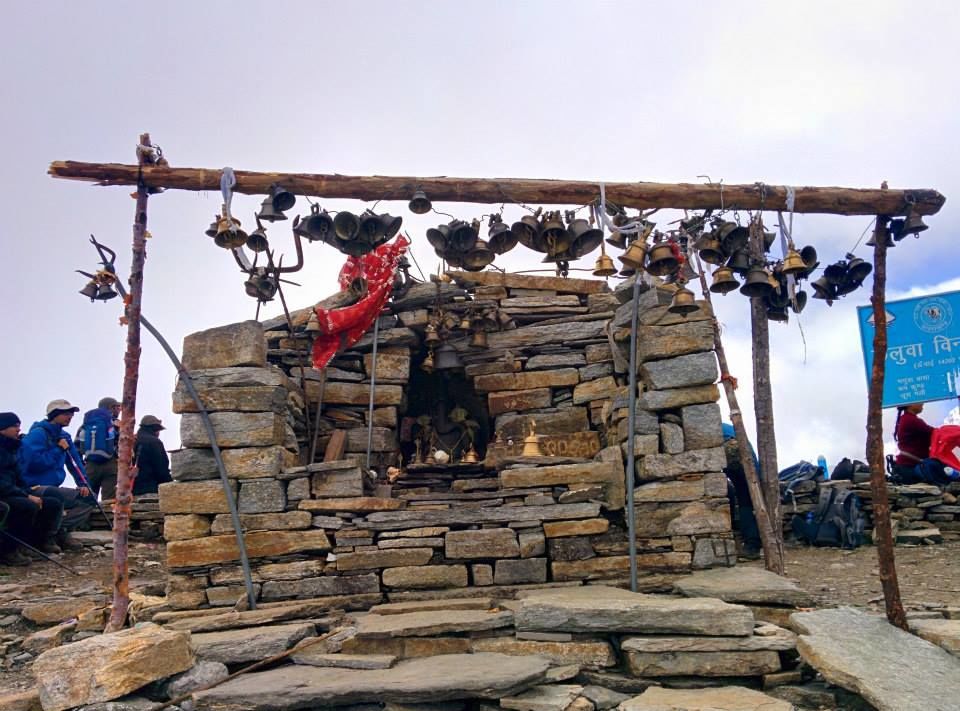
Bhagwabhasa is said to be the place where Goddess Parvati let her tiger loose and it is believed that you will not find any tigers after Bhagwabhasa. It is here that you will also find the Brahmakamal a rare flower which grows only at high altitudes and is considered to be a sacred flower often used for rituals and other religious uses. At this time of the year the Brahmakamal was not yet bloomed to its full state. Another place where you can find the Brahmakamal is the Valley Of Flowers during the month of August.
The campsite at Bhagwabhasa is on rocks and you will be sleep deprived the next day which is Day 6 and the summit day to Roopkund. The night temperatures will reach freezing point and you will find a thin layer of ice if you forget your water bottles outside the tent which apparently, we did.
Day 6 the final climb till Roopkund one should start by 4AM. The temperature will be at its lowest and the wind will be at its highest. You will cross a place named Chodiya Naag which is the place where Lord Shiva let loose his snake.The trek till Roopkund is difficult with a continuous steep ascend till you reach the lake. The oxygen level will drop considerably and the barren, rocky terrain will make it difficult to catch a faster pace.
The story behind Roopkund is Lord Shiva and Goddess Parvati were going back to the Himalayas and Goddess Parvati wanted to freshen up. Lord Shiva created a lake for Goddess Parvati to bath before they enter the Himalayas and thus she named it as Roopkund as the first thing she saw when she looked in the lake was her face so Roop in Hindi means "Face" and kund is "Lake".
The mystery remains as the lake is also known as the Skeletal Lake and when you reach the lake you are welcomed by bones and skulls both in the lake and around its perimeter. The lake is in the lap of a mountain and thus it is surrounded by mountains on all side and it gives you a feeling of being trapped.
It so happened that when Nanda Devi cursed the dancers all the king’s army was stationed at Roopkund to prepare for the kings visit and stay. When Nanda Devi cursed, there was said to be a huge hailstorm which buried the entire King's army alive at Roopkund which explains the skeletal remains.
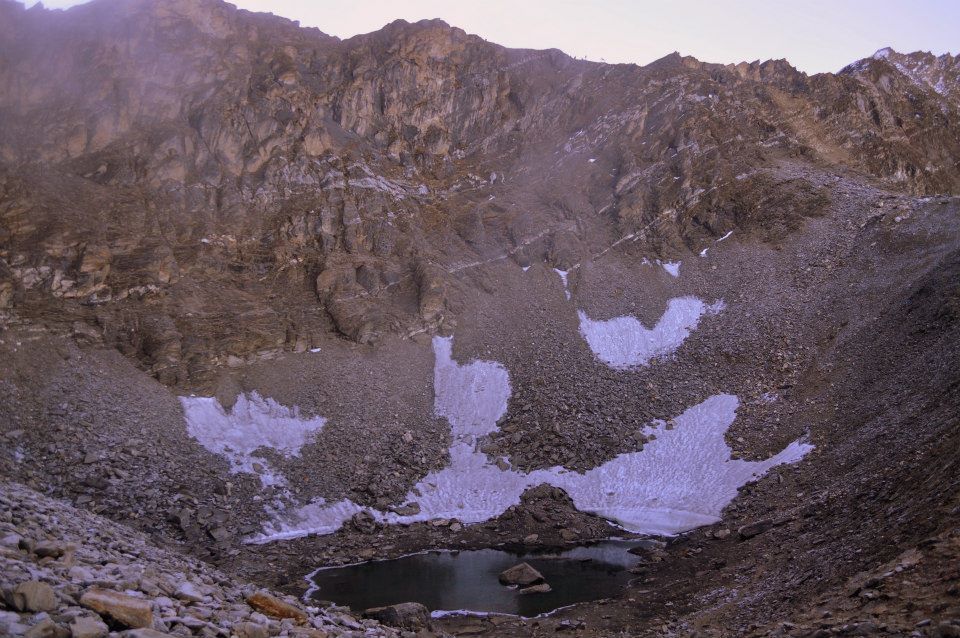
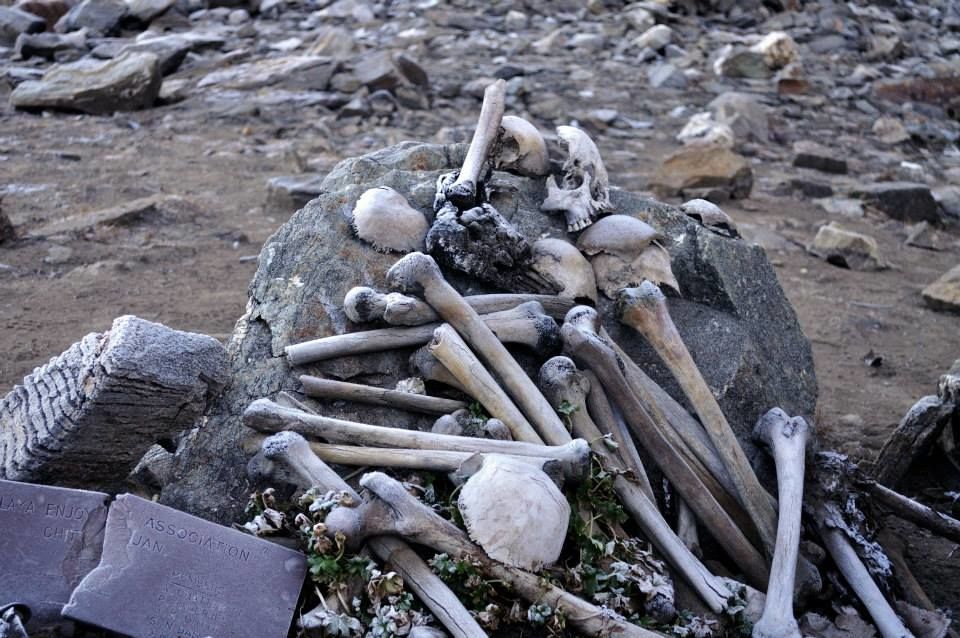
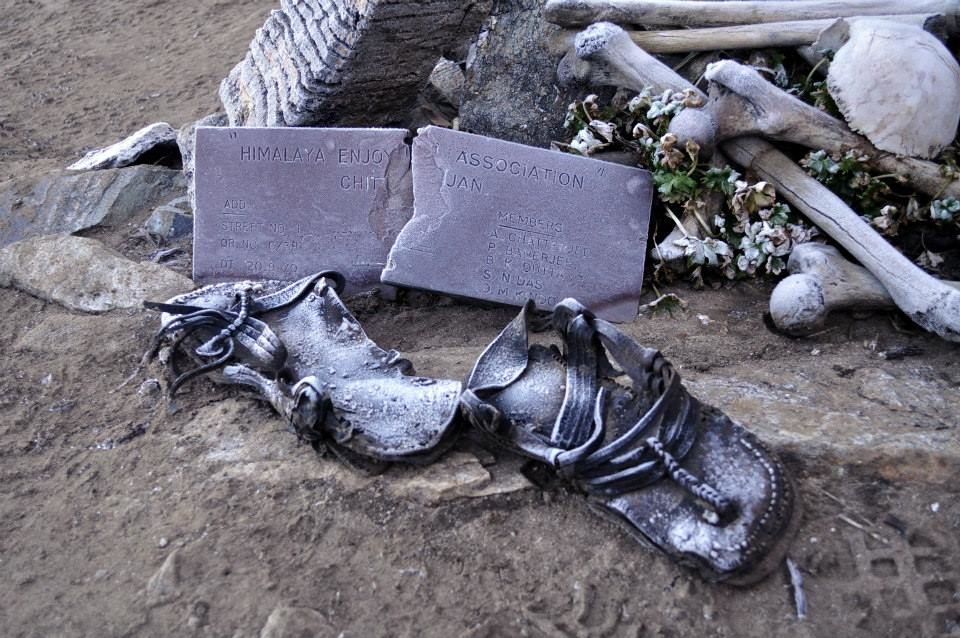
A short trek from Roopkund takes you to Jura Gali where Jura means "Narrow" and Gali means "Road". The trek takes you to the top of the mountain at the base of which you have the Roopkund lake. The mountains around are covered with snow and if you are lucky you may also witness small avalanches which we did but could not capture.
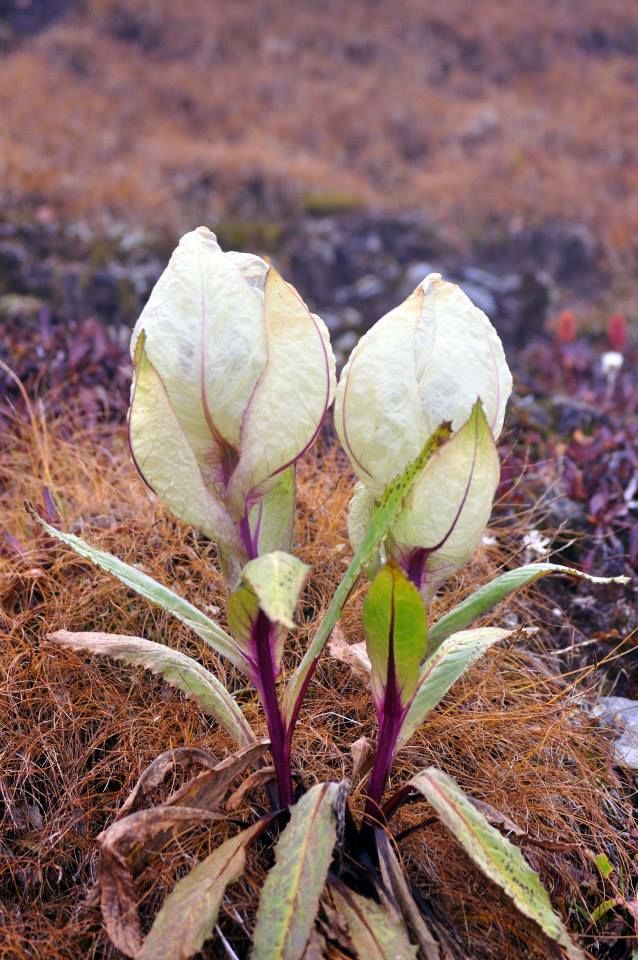
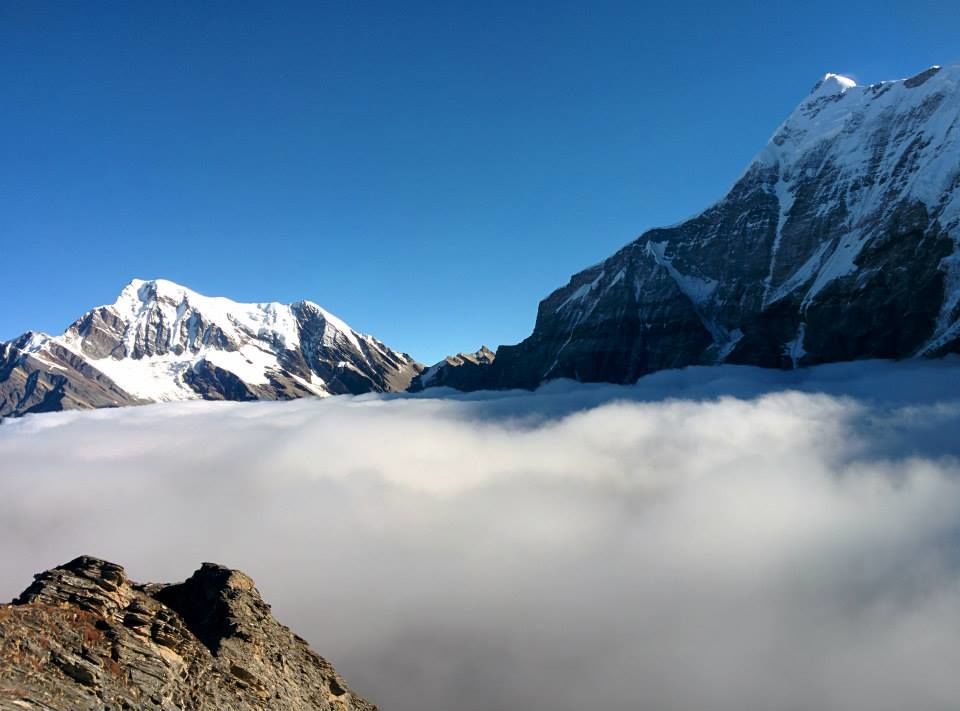
Roopkund is a trekkers delight with its scenic views and an easy trail as compared to other similar treks. It gives you a feeling of contentment and fills your heart with joy. It refreshes you enough that you can return to the fast pace city life and still be happy because you are filled with the memories of this place and the contentment of being able to witness the legacy that our forefathers have left behind.



